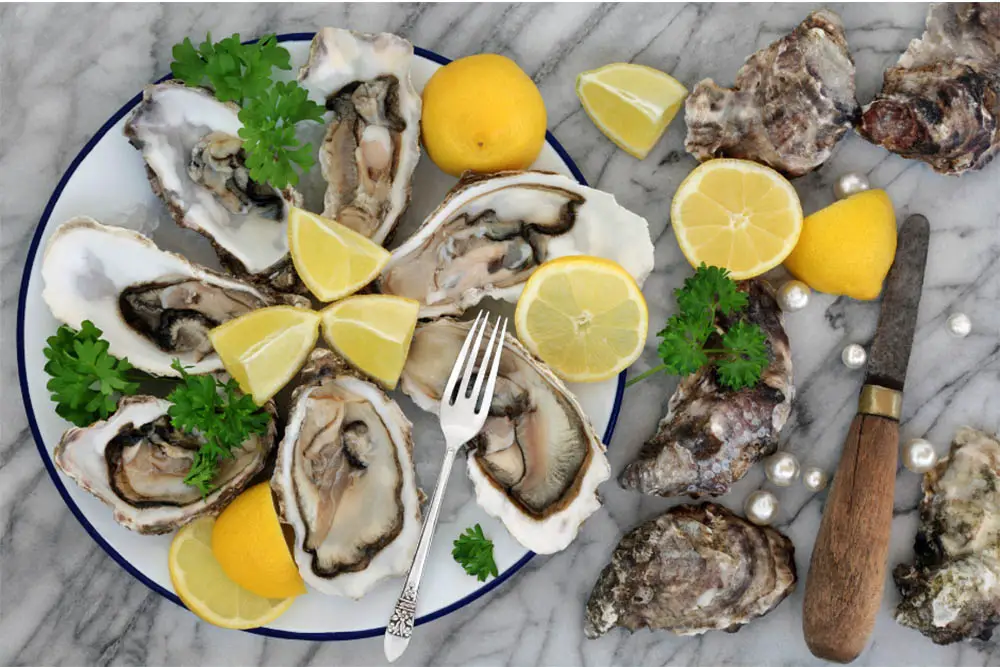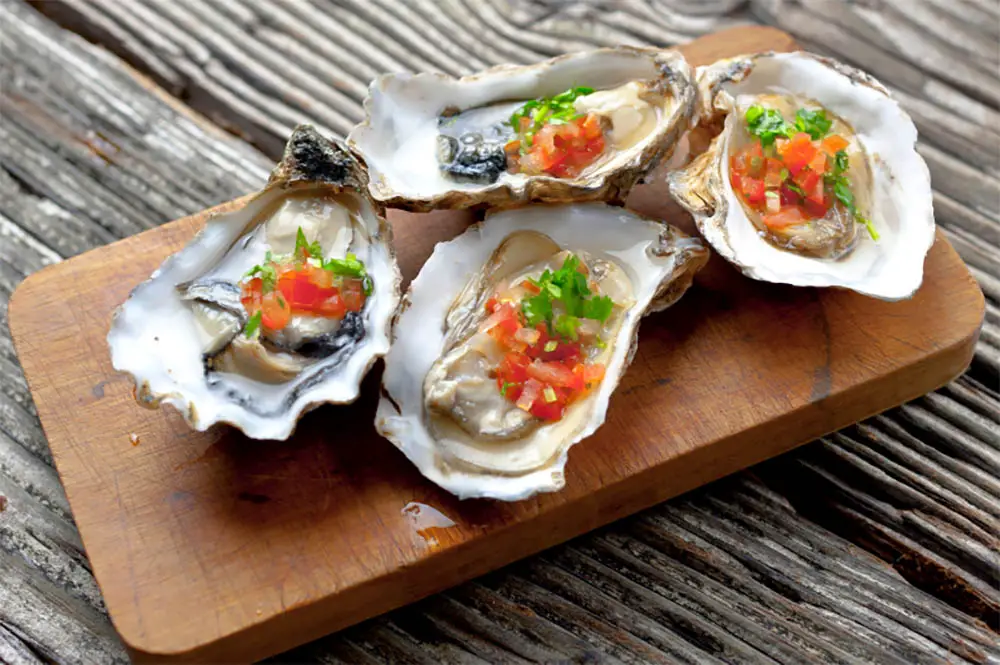Disclosure: Thank you for reading our articles! Some links may be affiliate links. We may get paid if you buy something or take an action after clicking one of these links. Additionally, as an Amazon Associate, I earn from qualifying purchases.
If you don't come from a coastal town then oysters tend to sound mysterious, enticing, and slightly nerve racking all at once. We totally get that, oysters are quite unlike anything else we eat here in the US.

If you're wondering about how oysters taste then you have come to the right place. However, we do have some bad news for you.
The question has no simple answer. So many things can affect the taste of oysters.
From when they're picked, to where they're picked, to how they're cooked. Oysters will taste different wherever you go.
If you want to learn more about how oysters taste, then keep on reading…
What do Oysters taste like?
How the oyster is cooked, garnished, and served will alter the flavor of the oyster. The thing that will have the biggest impact on the taste of your oysters will be where they were harvested.
It is said that oysters will taste different from harbor to harbor.
Not just by region. However, if you're trying to purchase oysters from somewhere like Crab Place then it is a good idea to understand how the location can affect the flavor.
You can add extra flavors to your oysters by serving them with different sauces and garnishes.
Many traditional restaurants opt to only add a little bit of salt and lemon to their oysters.
While other restaurants offer a whole range of sauces including Tabasco, mignonette, horseradish, or even hollandaise sauce.
East Coast Oysters
East Coast oyster flavors will really vary depending on where they have been harvested.
There is one main species of oyster on the east coast and that is the Atlantic oyster. These oysters make up over 85% of the oysters that are eaten in America every year.
There are a few other species of oysters grown on the east coast - include Wellfleets and Bluepoints. They are much rarer, however.
The general rule of thumb when it comes to east coast oysters is that the further south you go, the milder the oyster will taste.
As you make your way north to the coast of Canada, you will find the oysters develop a more briny taste.
If you are looking for a more savory oyster then you are going to want to shop for east coast oysters.
Most Atlantic oysters have a similar shape. They tend to be tear shaped with smooth edges and deep ridges.
West Coast Oysters
Life, weather, and tan levels vary wildly in the West, as to the flavors of their oysters. Some of the best oysters in the world can be found here, so don't skip over them.
The range of west coast oysters offers the widest variety of flavors. However, most of the oysters on this coast fall on the sweeter side of the taste spectrum.
There are three main types of West Coast oysters:
Pacific
Pacific oysters have buttery and sweet base flavors, with fruity or vegetal notes. Not unlike the tea from their native Asia.

These types of oysters have pointed shells and jagged edges. They were introduced to American shores in the early 1900s.
Olympian
Olympian oysters of the king of coppery flavors. These oysters are tiny and very shallow, especially when compared to the other West Coast oysters.
They are the rarest oyster on this coast. They are native to the Pacific NorthWest, but they are so rare after nearly being wiped out during the San Francisco Gold Rush.
These oysters are about the size of a quarter.
Kumamoto
The final West Coast oyster type is the Kumamoto oysters. They have a sweet base flavor with notes of nuttiness.
They are very popular with tourists as their shell is shaped like a little bowl - making them very cute and aesthetically pleasing. They were introduced to America in 1947, but are native to Japan.
Texture
Where your oyster is from will also affect the space and texture of the oyster. From some places, the oysters will be softer, while others will be more springy.
Generally, a well cooked oyster will be plump, juicy, and springy.
How to eat oysters
One of the things people find most nerve racking about eating oysters is, well actually having to eat them.
They are worried that they will do it wrong and make a fool of themselves. Here is a quick and easy guide to eating oysters:
Step 1 - pick up your oyster and use your fork to make sure that the oyster is completely detached from the shell. This means that it will slide when you pick it up.
Step 2 - Put the shell to your lips and then slurp the oyster out. You want to make sure that you get everything out of the shell - fat, juices, toppings, and all.
Step 3 - Once the oyster is in your mouth you can chew it a few times. This will give you a chance to really enjoy the flavors. After you are happy that you have filled your mouth with the flavor, swallow.
There you have it, enjoying an oyster is that easy! Remember not to swallow the oyster straight away as you won't be able to get any of the flavors that way.
How to know when something is wrong with your oysters
Your first warning sign when it comes to a bad oyster will be the smell.
Oysters should have a fresh sea smell, no matter how they have been cooked. If they are missing that smell something isn't right.
If there is a fishy or musty smell coming from the oyster - don't eat it.
Oysters should never be bought or served dry. You should expect to see liquid in the oyster. You should also expect your oysters to be fat and fill most of the shell.
If the liquid in your oyster is cloudy, this means the oyster was picked during the breeding season. While eating a cloudy oyster won't kill you - it will taste really bad.
